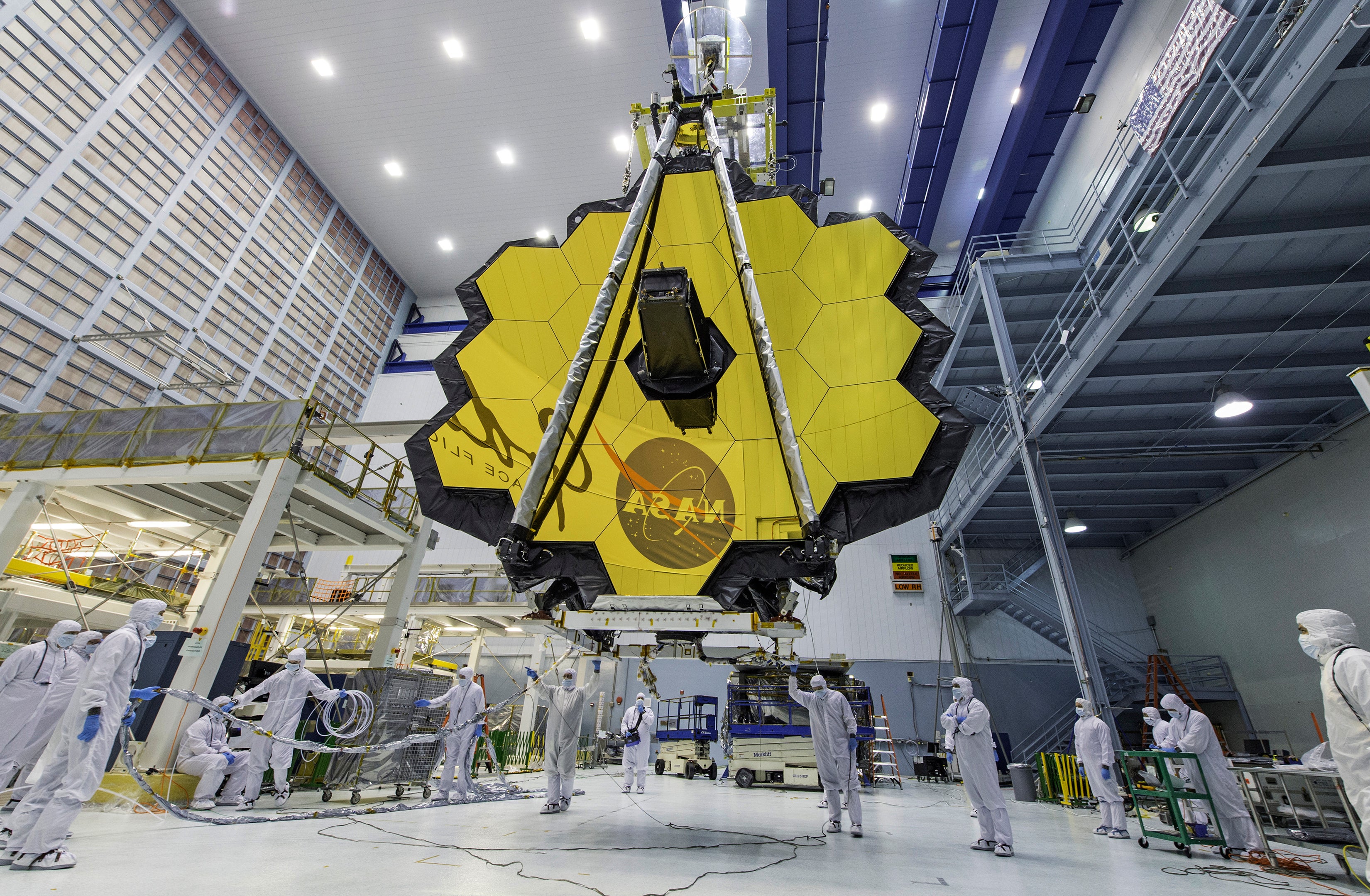Nasa’s galaxy-scouring James Webb Space Telescope completes crucial sunshield unfurling stage
The telescope has to undergo a number of stages before it will be ready for use later next month

The James Webb Telescope has successfully deployed part of its sunshield, one of the vital stages in its unfurling that will help scientists look further back in time than ever before.
The telescope was sent into space on Christmas Day, but that was only one part of its lengthy launch process; it must also unfurl its 18-segment mirror which will take place over a matter of weeks.
Three days after its initial launch, a key step in this process was completed. The Forward Unitized Pallet Structure (UPS) section of its sunshield was unfurled over a four-hour period. The heat shield is made of five layers of heat-resistant Kapton film.
“While the actual motion to lower the forward pallet from its stowed to its deployed position took only 20 minutes, and the lowering of the aft pallet took only 18 minutes, the overall process took several hours for each because of the dozens of additional steps required”, Nasa wrote in a blog post.
“These include closely monitoring structural temperatures, maneuvering the observatory with respect to the sun to provide optimal temperatures, turning on heaters to warm key components, activating release mechanisms, configuring electronics and software, and ultimately latching the pallets into place.”
Nasa’s next step for the telescope will be to unfold the Deployable Tower Assembly, release the sunshield cover, and then unfurl the sunshield itself. It is expected that the telescope will reach its final stages before the end of January.
“We’ve got five sun shield layers approximately 8,900 sq ft — almost the size of three tennis courts of very thin Kapton material about one to two thousandths of an inch thick. Making them go where you want them to go in zero gravity is extremely challenging”, Mike Menzel, Webb’s lead mission systems engineer at Nasa’s Goddard Space Flight Centre said.
Once in place, the James Webb Telescope will work in tandem with the Hubble space telescope, but because its mirror is larger it will be able to gaze further back into the history of the universe.
It will be able to look an astonishing 13.7 billion years, a mere 100 million years after the universe-forming Big Bang, to see the original stars taking shape.
Scientists are eager to see how closely these initial galaxies resemble our own Milky Way.
Join our commenting forum
Join thought-provoking conversations, follow other Independent readers and see their replies
Comments
Bookmark popover
Removed from bookmarks